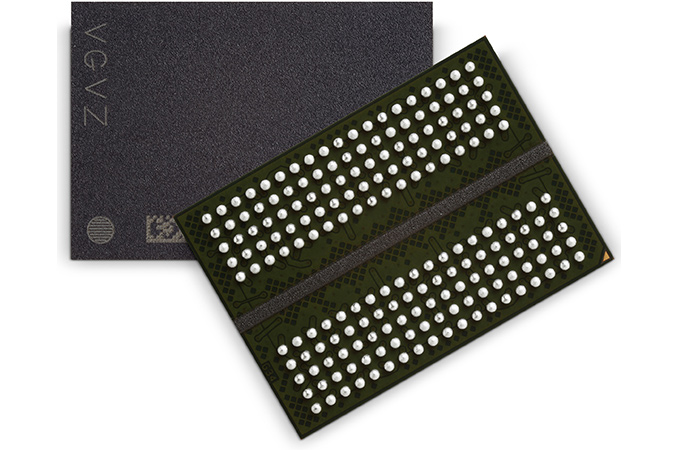Micron's GDDR6 Memory Debuts In Nvidia's GeForce RTX GPUs
Micron penned a blog post today announcing that the company is providing Nvidia with GDDR6 memory for the GeForce RTX 20-Series cards, which includes the 2070, 2080, and 2080 Ti. Micron is Nvidia's launch partner, but other companies will also chip in to supply the RTX series with GDDR6 memory in the coming months.
Micron's GDDR5X memory served as a bridge between the GGDR5 and GDDR6 era, but Micron was the only company to bring it to market. Micron expects GDDR6 to be a widely-adopted and long-lived product, so it has ceased further GDDR5X development. Micron also famously developed its Hybrid Memory Cube products that were once projected to worm their way into graphics cards, but now the company is firmly focused on GDDR6 for graphics applications. The company also has HBM2 in development for use in the future.
As we outlined during Micron's GDDR6 launch last month, the new memory brings plenty of performance for modern graphics architectures. Initially, Micron aims to release its 8Gb GDDR6 memory chips in 12 Gbps and 14 Gbps flavors and has plans to introduce faster 16Gbps GDDR6 memory chips in the near future. GDDR6 is also power miserly: Micron’s upcoming 8Gb 12 Gbps and 14 Gbps GDDR6 memory chips both operate at 1.35V as opposed to GDDR5’s 1.5V.
Nvidia's selection of GDDR6 over HBM2 should lead to lower manufacturing costs, though it's debatable if end users will see those savings any time soon. Luckily, Micron claims it has plenty of production capacity to prevent a repeat of the crippling memory shortages the industry weathered last year. The rampant memory shortages, along with the cryptocurrency mining boom, contributed to painfully high graphics card prices over the last year.
Micron's GDDR6 will also make its way into automotive and networking applications, but the real question is how it will perform in Nvidia's GeForce RTX cards. It appears the memory has some room for overclocking: Micron recently presented a research paper claiming that it was able to successfully overclock one of its GDDR6 prototype memory chips to a staggering 20 Gbps with a just slight bump in I/O voltage.
Of course, hands-on testing will tell the tale. We won't have to wait much longer to see how the performance of the Nvidia GeForce RTX GPUs pans out in our test suite–stay tuned!
Get Tom's Hardware's best news and in-depth reviews, straight to your inbox.

Paul Alcorn is the Editor-in-Chief for Tom's Hardware US. He also writes news and reviews on CPUs, storage, and enterprise hardware.
-
mac_angel I was hoping they would have went with Samsung. Maybe the AIBs will, and get the higher clocked ones.Reply -
ThisIsMe They were probably wanting more stability and better longevity over the Samsung "higher clocked" product. Micron memory is well known for it's durability and compatibility. It's products might not always be bleeding edge, but they almost always "just work" the way they should.Reply -
10tacle Reply21296163 said:I was hoping they would have went with Samsung. Maybe the AIBs will, and get the higher clocked ones.
As was I, but I'd be willing to bet it was question on whether or not Samsung could deliver on the demand required. Samsung is heavily diversified in providing NAND memory for smart phones and SSDs right now. So much so in fact that they are building a third memory plant after just finishing a second one two years ago (both of the new ones can switch between DRAM and NAND memory fabrication quickly based on demand). Also keep in mind Samsung, unlike Micron, is a heavily market diversified company that sells appliances, TVs and PC monitors (and LCD panels for other monitor brands), and smart phones and tablets. Micron, while a smaller company in regards to memory fabrication over Samsung, only makes memory.

